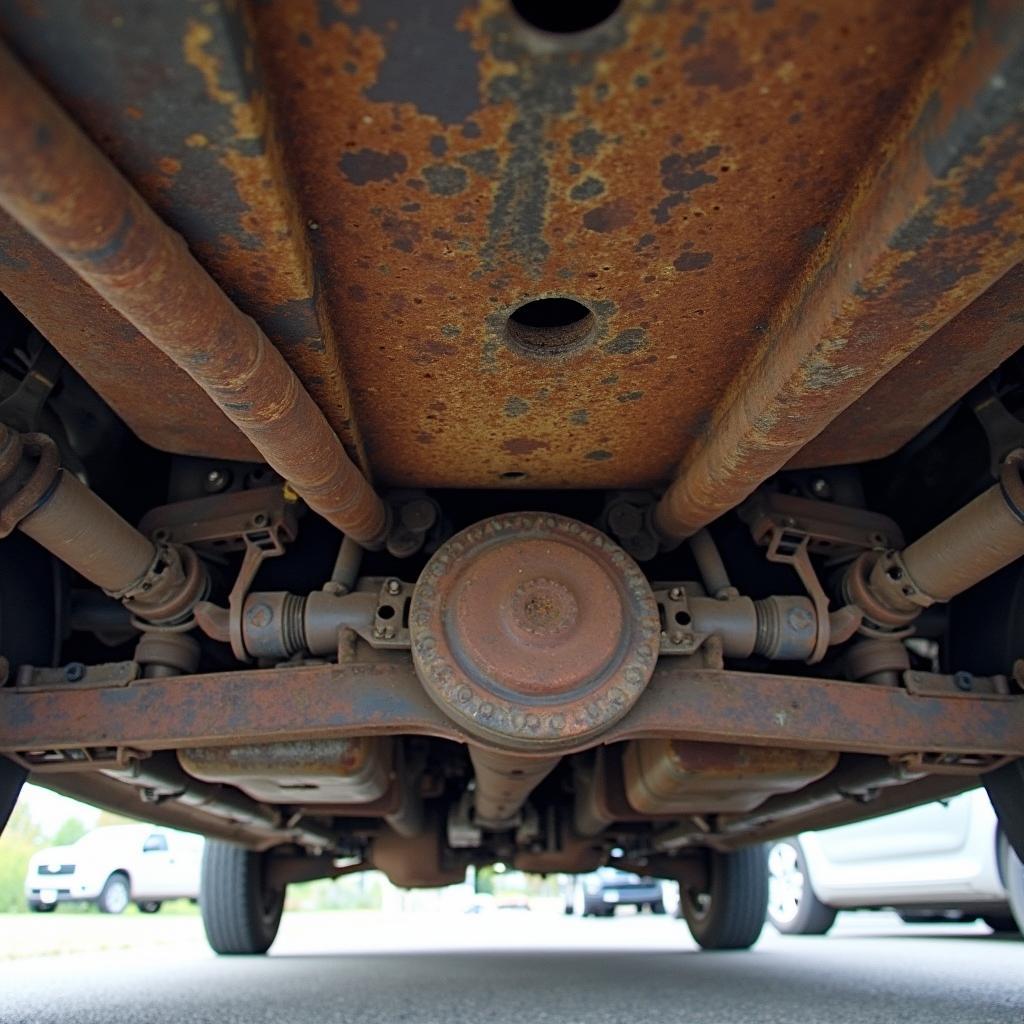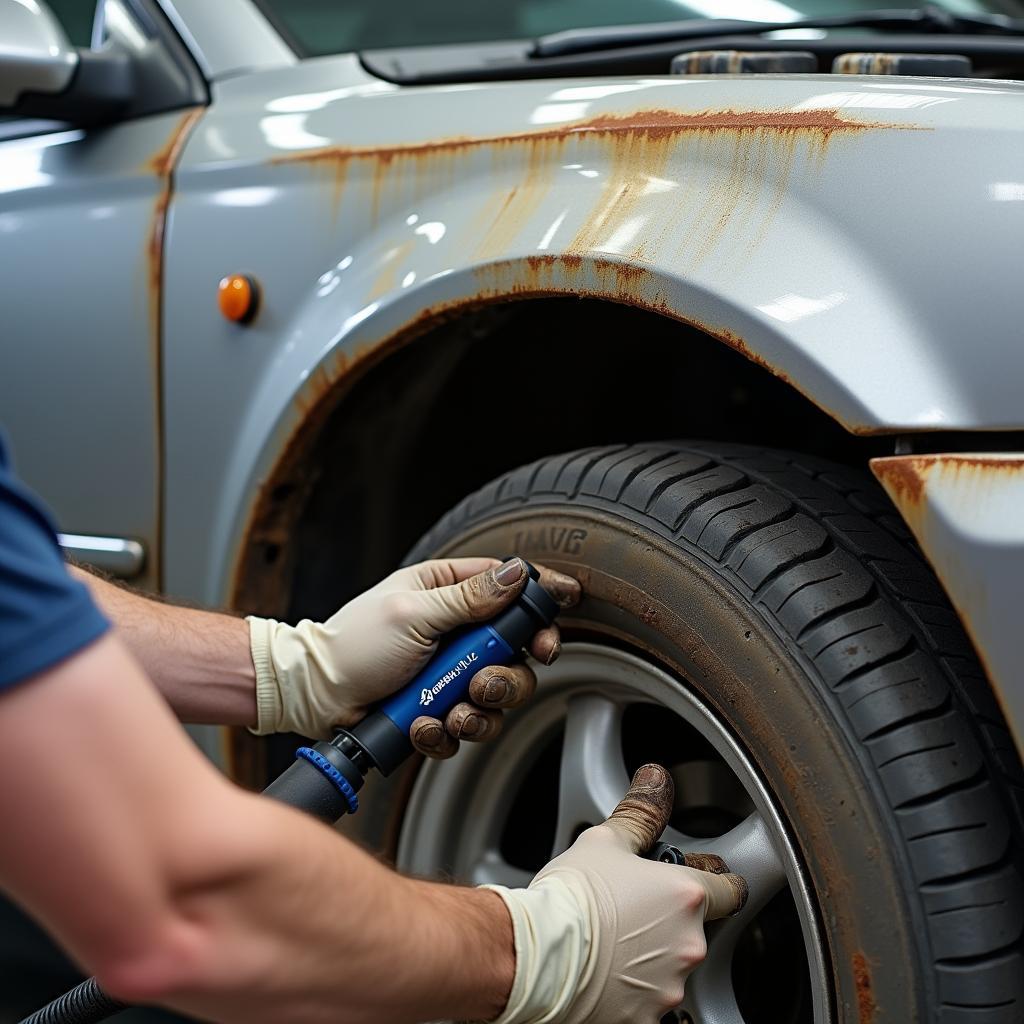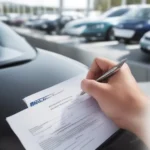“Rust bucket” – a word that sends shivers down the spine of many car lovers. But what really lies behind this unflattering term? And can you actually make a “rust bucket” shine again?
What Makes a Car a “Rust Bucket”?
 Rusty car door
Rusty car door
Basically, the answer is simple: rust! More precisely, severe corrosion on load-bearing parts of the bodywork. A few superficial rust spots don’t make a “rust bucket”. It becomes dangerous when rust compromises the vehicle’s stability.
“Rust is like an iceberg,” explains master mechanic Hans Schmidt from Hamburg, “you often only see the tip, but the damage can be much larger.”
Causes and Consequences of Rust
 Severely rusted underside of a car
Severely rusted underside of a car
Rust forms through a chemical reaction of metal, oxygen, and water. Areas where the paintwork is damaged, such as by stone chips or small scratches, are particularly susceptible. Road salt in winter also accelerates the corrosion process.
The consequences of rust can be serious:
- Loss of Value: A heavily rusted car is worth very little.
- Safety Risk: In the worst case, rusty body parts can break, leading to serious accidents.
- Vehicle Inspection (TÜV) Deficiency: Rust on load-bearing parts inevitably results in a failed inspection sticker.
Can a “Rust Bucket” Be Saved?
Whether restoring a “rust bucket” is worthwhile depends on various factors:
- Degree of Corrosion: If the rust is already too advanced, repair may be uneconomical.
- Vehicle Type: For rare classic cars, extensive restoration might be worthwhile, but less so for a mass-produced model.
- Cost-Benefit Factor: Repair costs should be in a reasonable relation to the vehicle’s value.
Rust Prevention: Prevention is Better Than Repair
 Car cavity sealing application
Car cavity sealing application
To avoid becoming the owner of a “rust bucket” in the first place, rust prevention is key:
- Regular Washing: Especially in winter after driving on salty roads.
- Check for Paint Damage: Small scratches and stone chips should be repaired immediately.
- Cavity Sealing: Protects the underbody and other cavities from rust.
- Underbody Protection: Provides an additional protective layer against stone chips and road salt.
Conclusion
A “rust bucket” is not just a visual problem, but can also pose a safety risk. Regular rust prevention is therefore essential to enjoy your vehicle for a long time.
Do you have questions about car rust or need help with repairs? Feel free to contact us – our auto experts will be happy to assist you!

